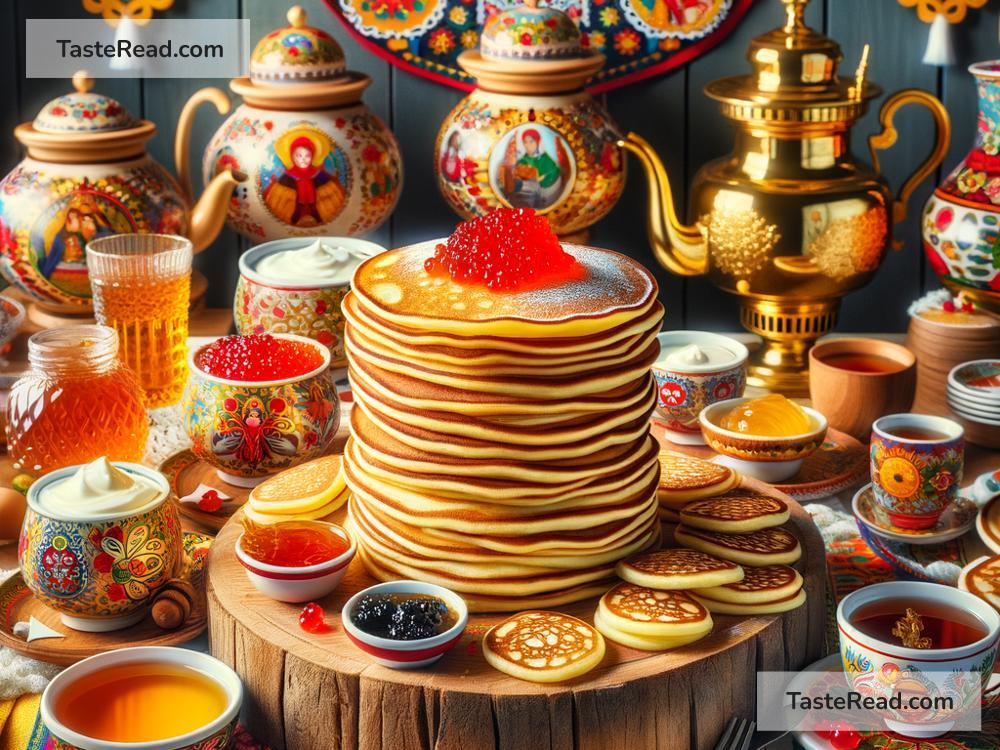Russian Blini: A Delicious Tradition of Maslenitsa
Russia is a country full of rich history, vibrant culture, and, of course, delicious food. One of the most beloved foods in Russian cuisine is blini, thin, golden pancakes that resemble crepes. These humble yet festive treats take center stage during Maslenitsa, a joyful weeklong celebration marking the end of winter and the arrival of spring. Today, let’s explore the special connection between blini and Maslenitsa and why people in Russia love them so much.
What is Maslenitsa?
Maslenitsa is one of Russia’s oldest holidays. It dates back to pre-Christian times when it was a pagan festival welcoming the return of the sun and warmer weather. Today, Maslenitsa combines elements of pagan traditions and Orthodox Christianity, and both religious and secular communities celebrate it.
Maslenitsa lasts for one week, usually in late February or early March, right before Lent, a period of fasting and reflection in Christianity. It’s also called “Butter Week” because eating dairy and rich, buttery foods is allowed during this time. It’s a cheerful celebration full of food, music, dancing, games, and laughter.
But there’s one food that everyone associates with Maslenitsa: blini!
What Are Blini?
Blini are thin pancakes made from simple ingredients: flour, eggs, milk, water, butter, and sometimes yeast. Some recipes also call for kefir (a fermented milk drink), sour cream, or buckwheat flour for unique flavors. The batter is mixed until smooth, then poured onto a hot pan and cooked until golden brown. The result is a light and tender pancake that can be served sweet or savory.
Blini are round like the sun, and this shape holds special meaning in Maslenitsa. During the cold winter months, people long for the warmth and brightness of the sun. Blini symbolize the sun, and eating them during Maslenitsa is a way to welcome its return and celebrate life’s renewal.
How Are Blini Served?
One of the best things about blini is their versatility. They can be simple or fancy, made to fit any taste. Sweet blini are topped with jam, honey, sweetened condensed milk, fresh berries, or dusted with powdered sugar. Savory blini might be filled with sour cream, butter, caviar, smoked salmon, or even mushrooms and meat. Some people roll or fold them like a crepe, while others stack them tall with layers of fillings.
During Maslenitsa, it’s common to prepare huge stacks of blini to share with friends and family. People gather around the table to eat, laugh, and enjoy the company of loved ones. It’s not uncommon for homes to fill with the warm smell of fresh pancakes being cooked on the stove during this festive week.
Maslenitsa Traditions
Maslenitsa is not just about delicious food; it’s a lively celebration filled with old customs and activities. Here are some of the most cherished traditions:
-
Feasts and Blini Parties: Maslenitsa is a time of indulgence before Lent begins, so people eat heartily all week. Families host parties centered around blini, and some communities even host outdoor pancake festivals. Vendors sell warm blini and steaming cups of tea to keep everyone happy and full.
-
Folk Music and Dancing: Traditional songs and dances are an important part of Maslenitsa. People sing together, play musical instruments, and dance in circles.
-
Sledding and Games: Maslenitsa is often celebrated outdoors, so activities like sledding, snowball fights, tug-of-war, and other playful games keep participants entertained.
-
Burning the Straw Effigy: At the end of Maslenitsa, people gather to burn a straw effigy called “Lady Maslenitsa.” The effigy represents winter, and burning it is a symbolic way of letting go of the cold season and welcoming spring.
Why Do People Love Blini During Maslenitsa?
Blini are more than just pancakes—they represent warmth, cheer, and togetherness. Sharing blini with family and friends shows kindness and hospitality, important values in Russian culture. During Maslenitsa, the simple act of making and eating blini becomes a joyous ritual that brings everyone closer.
Also, blini let people express their creativity. There are countless ways to serve them, so no two plates of blini are exactly alike. Whether topped with sweet honey or salty caviar, blini always add a little sunshine to Maslenitsa celebrations.
The End of Maslenitsa: Saying Goodbye to Winter
At the end of the week, Maslenitsa celebrations come to a close with the burning of the straw effigy. This dramatic event symbolizes saying goodbye to the hardships of winter and embracing the hope and energy of spring. People leave the festival in high spirits, ready for the season ahead and the start of Lent.
Although Maslenitsa lasts only a week, the joy of making and eating blini is a timeless tradition that people carry in their hearts for years. Many people continue to cook blini even after the holiday because they are so delicious and comforting.
Conclusion
Maslenitsa is a unique and exciting Russian holiday that welcomes the warmth, light, and renewal of spring. At the heart of the celebration is the beloved blini, a golden pancake that has been enjoyed for centuries. Whether shared at family dinners, served at festivals, or eaten with friends outdoors, blini are more than just food—they’re a symbol of tradition, community, and happiness.
So, if you ever visit Russia during Maslenitsa, be sure to try some freshly made blini. You’ll get to taste not just the pancakes but also the spirit of the season—the joy of saying goodbye to winter and celebrating all the good things that spring brings!


